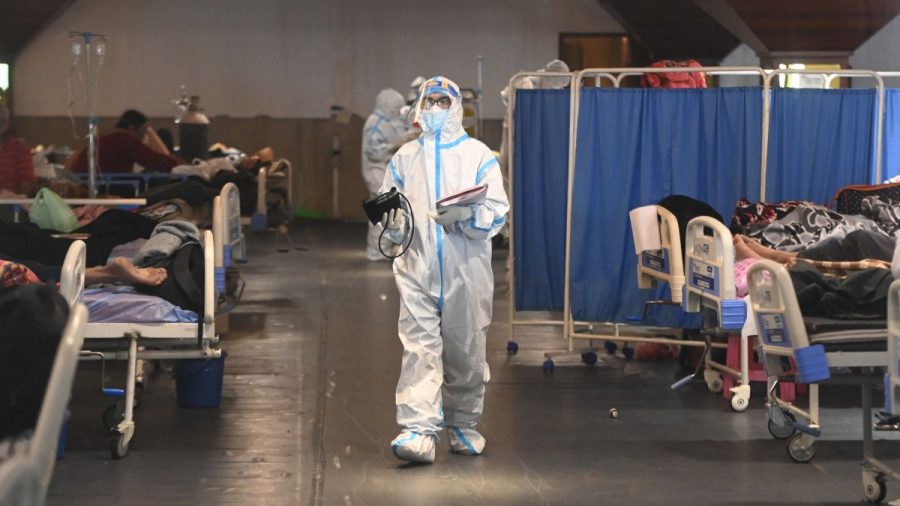Whether your shoe size is a seven or a 12, the size of your footprint on the environment is much larger than you might think.
According to a ScienceDirect study, anywhere from 18 to 41 kilograms of carbon is released into the atmosphere in order to make a single pair of shoes. That is equivalent to keeping a 100-watt lightbulb on for between one and two weeks straight, or about 252 hours of constant electricity.
When buying a pair of shoes, people often think about how supportive they are, the price tag and the style. Rarely do they consider the impact their purchase could have on the environment when the shiny new pair of shoes looks so nice in the box.
For many university students, Chuck Taylors, or “Chucks,” are popular shoes — and popular carbon dioxide emitters. For about $50 you can choose from 13 different color options, or if that’s not enough, you can design your own. These shoes check the boxes of trendy, cheap and also, typically have high rates of carbon emissions to make them.
Many chemicals and machines are typically used during the manufacturing stages of making shoes. In order to power these machines, large amounts of fossil fuels — like coal — are used. These fossil fuels then emit greenhouse gases, like carbon dioxide, into the environment. The machines can produce large amounts of shoes at once, which is why large companies choose to use them despite their high rate of emissions.
According to a New York Times article titled “Converse Treads Carefully in Updating Well-Worn Chuck Taylor Brand,” Converse — the company owned by Nike who makes Chuck Taylors — sells over 100 million pairs of Chucks every year. That’s a lot of lightbulbs.
When new members join sororities on campus, it is common for them to buy a pair of Chuck Taylors that match their sorority colors. These chucks serve both as a distinguisher for those in these organizations, as well as a go-to pair of sneakers to wear to parties. This has become a common theme amongst organizations, but it isn’t required or necessarily expected. While chucks are popular among many university students, some feel like this is an outdated trend.
“I stopped wearing my chucks for most occasions sophomore year because one of my closest friends wasn’t in a sorority and I found freshman girls and older guys were rude to her because she didn’t have any,” said senior Nicole Fox. “I think they’re a sh**ty representation of a socially constructed hierarchy.”
Since 2016, however, there has been an environmentally friendly alternative to the casual sneaker, giving students the opportunity to contribute to the reduction of carbon emissions if they replace their chucks.
With hopes of limiting further environmental damage from shoe production, Allbirds founders Tim Brown and Joey Zwillinger began making shoes from natural materials like wool, eucalyptus, castor bean oil and recycled bottles, according to their website. Not only are these shoes made from natural materials, they only release 10 kilograms of carbon dioxide per pair of shoe — less than half of overall industry standards.
Ten kilograms of carbon for Brown and Zwillinger was still 10 kilograms too much, so in 2019 Allbirds vowed to go carbon neutral.
“For every ton of carbon we emit as a business — from the sheep on our farms to the lightbulbs in our headquarters — we’ll pay to take a cone of carbon out of the atmosphere” through carbon offsets, pledges their website.
Allbirds’ commitment is achieved through “purchasing credits from third-party verified emissions reduction projects,” meaning that they are supporting companies that help plant and protect trees and create alternative ways of making energy (wind and solar) to lessen the greenhouse gases that enter our atmosphere daily.
Because of their commitment to the environment, these shoes come with a heftier price of $95 for their classic wool runner; a price that Allbirds believes is worth the overall benefit to the environment since each pair comes with a net total of zero carbon emissions
“I knew they were sustainable but I didn’t know in what way,” said sophomore Jack Jestus. “I would say that it definitely helped my choice in wanting them, but I wouldn’t say it’s the only reason I got them.”
Zwillinger and Brown are creating a completely new standard for the shoe industry, and others are following suit. According to Business Insider, some other shoe companies implementing sustainable initiatives include Rothy’s, Nike (with their “flyknit” line), Nothing New and several others. These brands are committed to reducing carbon emissions and, in some cases, using recycled materials to create their sneakers.
Additionally, Converse released their “renew” collection last year, which, according to their website, is a sustainable alternative to their classic Chucks. The collection turns waste from cotton scraps, plastic bottles, and other materials like denim into yarn, which they then turn into a new pair of sneakers.
“People don’t buy products because they’re sustainable, they buy them because they’re great,” Brown said in an interview with CNBC. Brown and Zwillinger are working to prove that both sustainability and greatness can go hand in hand.







